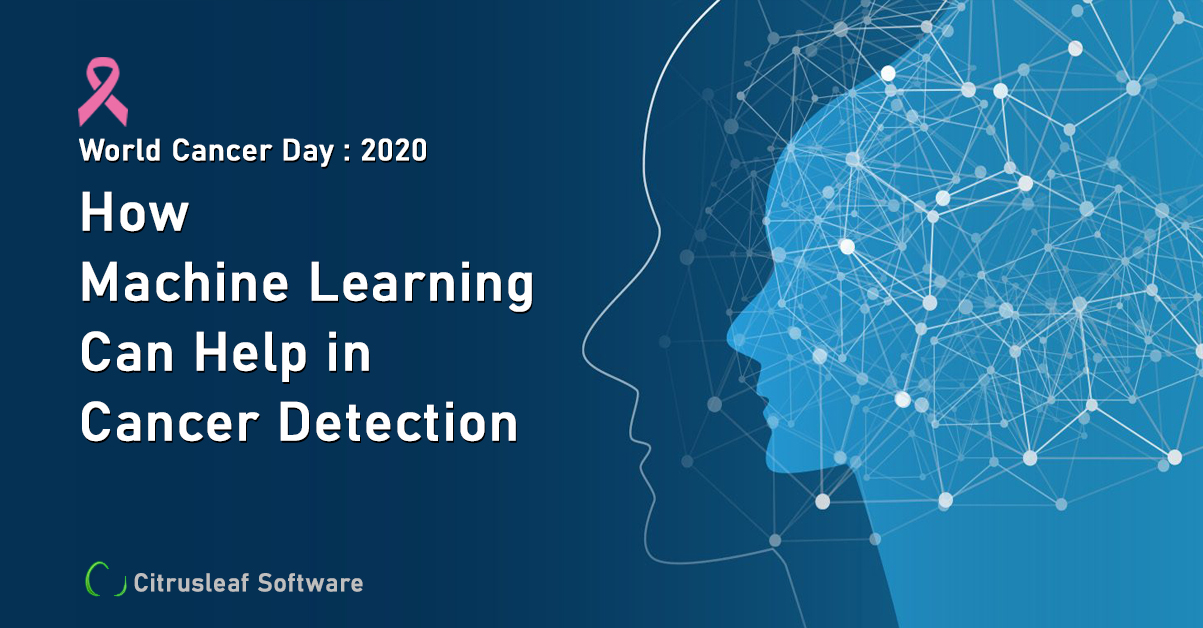Cancer is one of the heterogeneous diseases that has many subtypes. Non-communicable disease cancer is one of the major factors that impact the morbidity and mortality rate in the world. Cancer has been considered as the 2nd source of death in the world and the reason behind this increased death rate is nothing but delayed detection of cancerous tissue growth in a person. Hence, the early diagnosis and prognosis of cancer have become a necessity. As per the reports of Oslo University Hospital, pathologists have only 60% of accuracy in cancer prognosis.
Classifying the cancer patients on the basis of disease risks helps with the accurate clinical management of the cancer patient. The fact led many research teams to study the applications of technologies like AI and ML in cancer detection.
Machine Learning in Cancer Detection
The medical researchers and scientists have conducted multiple research studies over the use of machine learning in the medical field. ML technology is being used for the prognosis of critical illnesses like cancer. Medical applications such as EEG analysis, cancer analysis, cancer diagnosis are now using ML. These technologies are being utilized to advance the treatment of cancerous conditions.
ML tools can detect key features from complex datasets. Techniques like Artificial Neural Networks (ANNs), Bayesian Networks (BNs), Support Vector Machines (SVMs) and Decision Trees (DTs) have been used in cancer research for the invention of cancer detection and treatment methods. But, in order to use these ML methods in everyday clinical practice needs enough understanding of cancer progression.
Current Cancer Researches based on ML and AI
Advanced ML approaches have been employed in the modeling of cancer progression. Most of the research models are based on supervised ML techniques, it’s different input features and data samples. Applying ML techniques in cancer research is a growing trend. Here are the most recent cancer researches that employ techniques like ML and AI as an aim to model cancer risk.
- Breast Imaging Through ML
The rate of deaths caused by breast cancer is continuously decreasing because of the advance treatments, earlier detection of cancerous tissues, and increased cancer awareness. The health and medical community are still striving to find advanced methods for the early detection of lesions with mammography screening. Mammography screening is the most effective method that employs ML approaches for detecting early breast cancer.
With technology advancements, Mammography imaging has been evolved from single emulsion film to a 2-D digital format to the multi-image platform i.e Digital Breast Tomosynthesis (DBT). With this evolution, radiologists are now able to identify corners more accurately.
Thanks to Machine Learning, now mammographic screening procedures are more accurate with decreasing reading times. AI-enabled applications for computer-aided diagnosis (CAD), prognosis algorithm, and breast ultrasound evidently show the cancer progression with ML and AI.
- Breast Ultrasound
Multiple companies have invested in AI-driven software solutions to identify anatomical features, auto-annotate pathologies to avoid labeling errors and provide more accurate reports. The rapidly growing AI technology can be potentially applied in clinical applications like the breast cancer app. According to the Japanese Journal of Radiology, AI and ML technologies can be employed to identify benign and malignant breast tissues with more accuracy than human radiologists.
The coming future of ultrasound imaging interpretation is most likely to be replaced with the ML-drive machines. AI methods are rising within the radiology community that has decreased the image interpretation time and increased accurate diagnosis.
- Breast MRI
Breast Ultrasound and breast MRI are two important procedures used in the traditional screening of mammography and as an initial screening tool for the women that have a high-risk factor for developing breast cancer. Since none of the methods utilize ionizing radiation to produce images, both can be used for pregnant women.
According to research presented in 2019, AI and ML-driven advanced algorithms on breast MRI have the capacity to autonomously recognize the screening patterns, the relationship within an underlying dataset and comparison between the machine-generated dataset and manually given dataset. With Machine Learning and AI technology, machines are able to analyze and identify breast tumors.
- AI Detection Algorithm
Technology has entered the medical sector using an AI model that is capable of automatically detecting breast cancer. According to a recent study based on the data sets from the USA and the United Kingdom, the AI model can more effectively screen a human body for breast cancer only with the given pixel data and without any access to patient history or risk factors.
Even after the widespread adoption of mammography, interpretation and scanning of images are difficult. According to the traditional CAD systems and AI studies, the AI system has the ability to translate between different screening populations and settings without additional training data. The research demonstrates the ability of ML technology and ML algorithm to predict breast cancer that has surpassed the detection ability of human experts.
